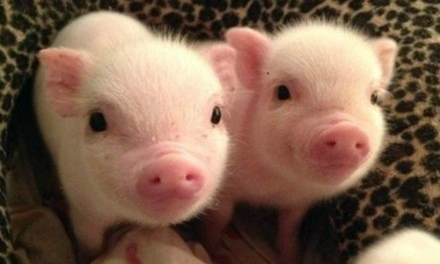Dominique M Sommer,Jennifer M Young,Xin Sun,Giancarlo López-Martínez,Christopher J Byrd
 Group gestation housing is quickly becoming standard practice in commercial swine production. However, poor performance and welfare in group housed sows
may result from the formation and maintenance of the social hierarchy within
the pen. In the future, the ability to quickly characterize the social
hierarchy via precision technologies could be beneficial to producers for
identifying animals at risk of poor welfare outcomes. Therefore, the objective
of this study was to investigate the use of infrared thermography (IRT),
automated electronic sow feeding systems, and heart rate monitors as potential
technologies for detecting the social hierarchy within five groups of sows. Behavioral
data collection occurred for 12 h after introducing five sow groups (1–5;
n = 14, 12, 15, 15, and 17, respectively) to group gestation housing to
determine the social hierarchy and allocate individual sows to 1 of 4 rank
quartiles (RQ 1–4). Sows within RQ1 were ranked highest while RQ4 sows were
ranked lowest within the hierarchy. Infrared thermal images were taken behind
the neck at the base of the ear of each sow on days 3, 15, 30, 45, 60, 75, 90,
and 105 of the experiment. Two electronic sow feeders tracked feeding behavior
throughout the gestation period. Heart rate monitors were worn by 10 randomly
selected sows per repetition for 1 h prior to and 4 h after reintroduction to
group gestation housing to collect heart rate variability (HRV). No differences
were found between RQ for any IRT characteristic. Sows within RQ3 and RQ4 had
the greatest number of visits to the electronic sow feeders overall
(P < 0.04) but spent shorter time per visit in feeders (P < 0.05) than RQ1 and RQ2 sows. There was an interaction of RQ with hour for feed offered (P = 0.0003), with differences between RQ occurring in hour 0, 1, 2, and 8. Higher-ranked sows (RQ1 and RQ2) occupied the feeder for longer during the first hour than lower ranking sows (RQ3 and RQ4; P < 0.04), while RQ3 sows occupied the feeder longer than RQ1 sows during hour 6, 7, and 8 (P < 0.02). Heart beat interval (RR) collected prior to group housing introduction differed between RQ (P < 0.02 for all), with RQ3 sows exhibiting the lowest RR, followed by RQ4, RQ1, and RQ2. Rank quartile also affected standard deviation of RR (P = 0.0043), with RQ4 sows having the lowest, followed by RQ1, RQ3, and RQ2 sows. Overall, these results indicate that feeding behavior and HRV measures may be capable of characterizing social hierarchy in a group housing system.
Group gestation housing is quickly becoming standard practice in commercial swine production. However, poor performance and welfare in group housed sows
may result from the formation and maintenance of the social hierarchy within
the pen. In the future, the ability to quickly characterize the social
hierarchy via precision technologies could be beneficial to producers for
identifying animals at risk of poor welfare outcomes. Therefore, the objective
of this study was to investigate the use of infrared thermography (IRT),
automated electronic sow feeding systems, and heart rate monitors as potential
technologies for detecting the social hierarchy within five groups of sows. Behavioral
data collection occurred for 12 h after introducing five sow groups (1–5;
n = 14, 12, 15, 15, and 17, respectively) to group gestation housing to
determine the social hierarchy and allocate individual sows to 1 of 4 rank
quartiles (RQ 1–4). Sows within RQ1 were ranked highest while RQ4 sows were
ranked lowest within the hierarchy. Infrared thermal images were taken behind
the neck at the base of the ear of each sow on days 3, 15, 30, 45, 60, 75, 90,
and 105 of the experiment. Two electronic sow feeders tracked feeding behavior
throughout the gestation period. Heart rate monitors were worn by 10 randomly
selected sows per repetition for 1 h prior to and 4 h after reintroduction to
group gestation housing to collect heart rate variability (HRV). No differences
were found between RQ for any IRT characteristic. Sows within RQ3 and RQ4 had
the greatest number of visits to the electronic sow feeders overall
(P < 0.04) but spent shorter time per visit in feeders (P < 0.05) than RQ1 and RQ2 sows. There was an interaction of RQ with hour for feed offered (P = 0.0003), with differences between RQ occurring in hour 0, 1, 2, and 8. Higher-ranked sows (RQ1 and RQ2) occupied the feeder for longer during the first hour than lower ranking sows (RQ3 and RQ4; P < 0.04), while RQ3 sows occupied the feeder longer than RQ1 sows during hour 6, 7, and 8 (P < 0.02). Heart beat interval (RR) collected prior to group housing introduction differed between RQ (P < 0.02 for all), with RQ3 sows exhibiting the lowest RR, followed by RQ4, RQ1, and RQ2. Rank quartile also affected standard deviation of RR (P = 0.0043), with RQ4 sows having the lowest, followed by RQ1, RQ3, and RQ2 sows. Overall, these results indicate that feeding behavior and HRV measures may be capable of characterizing social hierarchy in a group housing system.
2023,JAS,101:skad143
https://doi.org/10.1093/jas/skad143
Registration hotline: 021-57634675
fax: 021-57632800
Copy right : 上海亘泰实业集团
Collaboration & Sponsorship: 021-57634938 57631012
ASASHotline:021-67868428
Site Map | CNZZStatistics
address:Shanghai songjiang jiuting town nine new highway 90 lane 3 nine new commercial building 15 floor

WeChat ID:asaschina
The pig nutrition international BBS CSIS